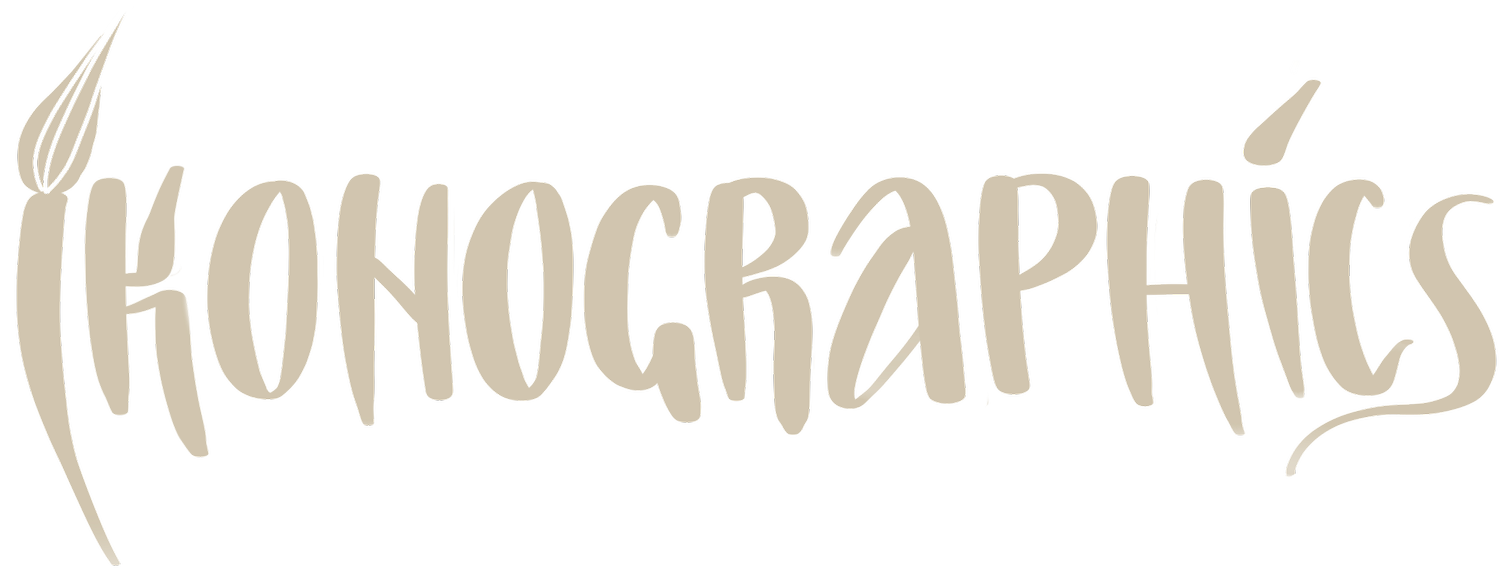Painting the Face of St Gavrilia
The second book I read in Greek was The Ascesis of Love about Saint Gavrilia back in 1998 and it had a profound effect on me. Just a few months ago I bought myself another copy of the book as my original one was left in South Africa. I’ve always wanted to read it again as the first time was after I had completed an 8 month Greek language course so my understanding was still very limited. Just a few weeks after I bought the book I was delighted to hear that Gerondissa Gavrilia has been numbered among the Saints! Glory to God! So at the first opportunity I wanted to paint her icon. I have already written about the difficulties of painting contemporary Saints in this blog about Painting St Sophrony of Essex so I won’t repeat what I have already said there.
Studying the Facial Features
Here I started off by studying St Gavrila’s facial features. Unfortunately most of the photos available of her have very low resolution. But the fact that the photo is quite blurred is actually helpful because it means we don’t get lost in the details, as what we want to do is find the main features and give them a Byzantine rhythm.
Preliminary Sketch
After studying the features on the photograph, I make preliminary sketches.
Proplasmos
We cover the face, hair and hands in the same proplasmos make from yellow ochre, mars red and black.
1st Grapsimo
We make the first grapsimo with mars red and a little black to create a brown colour with which we paint the facial features and build up the darker areas around the face, blending into the proplasmos.
2nd Grapsimo
For the 2nd grapsimo we add some black to the 1st and again define the darker areas and blend into the 1st grapsimo.
3rd Grapsimo
For the 3rd grapsimo we add some black to the 2nd and again define the very darkest areas, this time without blending into the 2nd.
4th Grapsimo
We then add some more black for the fine lines on the eyebrows, the upper eyelids, the pupils of the eyes.
Cool Glaze
We paint a diluted glaze made of yellow ochre, white and a touch of black on the lightest parts. It forms a cool transition from the proplasmos with the 1st flesh. The cool colour also helps project this side of the face out towards the viewer.
1st Flesh
The 1st Flesh is made with yellow ochre and white. You can also add a touch of mars red. We start building up the forms of the face and blending out into the glaze and proplasmos.
2nd Flesh
The 2nd flesh is made with the 1st flesh and white. It is built up within the 1st flesh slowly building up the volume of the forms.
Warm Glaze
The warm glaze is made with diluted mars red and yellow ochre and painted on the darker side of the face creating a transition between the 1st flesh and the proplasmos. It is also painted on the lower lip, the eyelids, and cheeks It is the contrast between the warm and cool glazes that brings the flesh tones to life.
3rd Flesh
The 3rd flesh is made with the addition of white to the 2nd and is built up with in the 2nd.
1st Psymithia
The first psymithia are made with 3rd proplasmos and white and are painted rhythmically in the lightest areas.
2nd Psymithia and Final Details
The 2nd and final psymithia are pure white and are painted within the 1st psymithia only in the very lightest areas only on the lighter side of the face so that it projects out.
Then we take some red ochre and paint it on the upper lip, the tear ducts, on the darker side of the nose and face.














